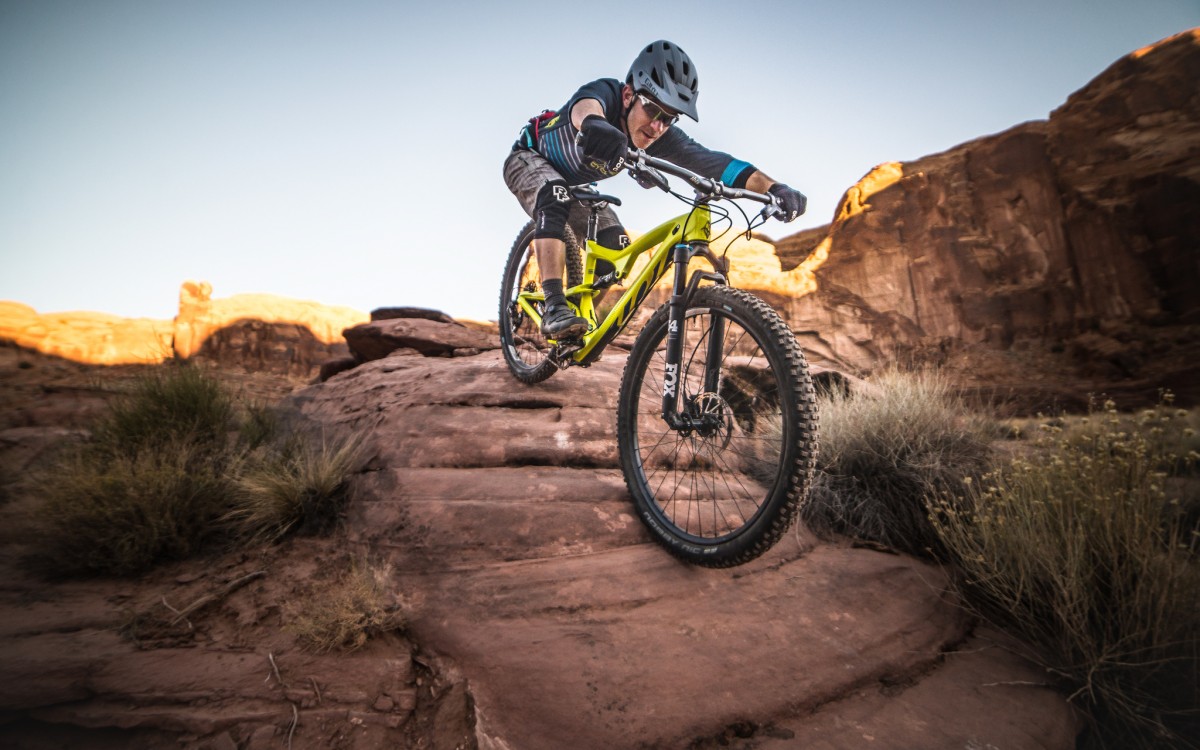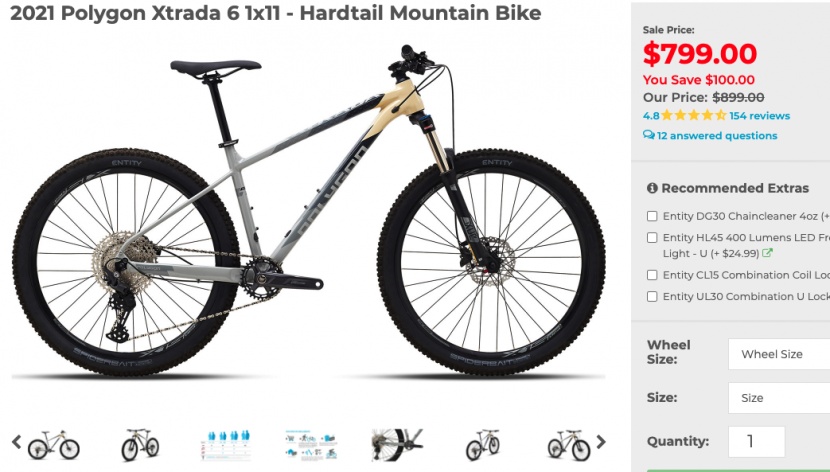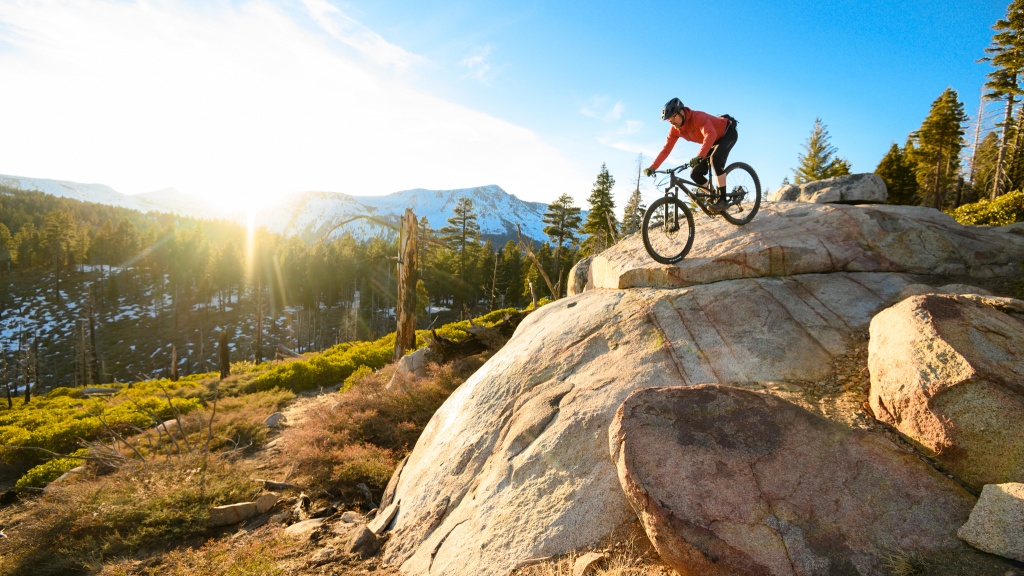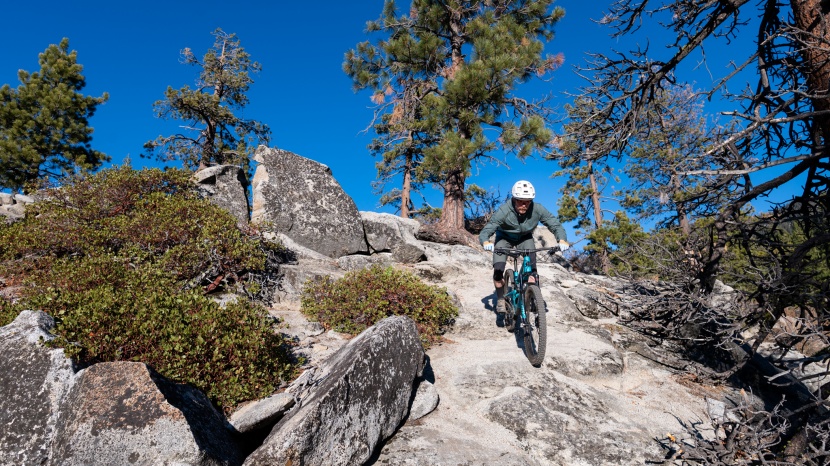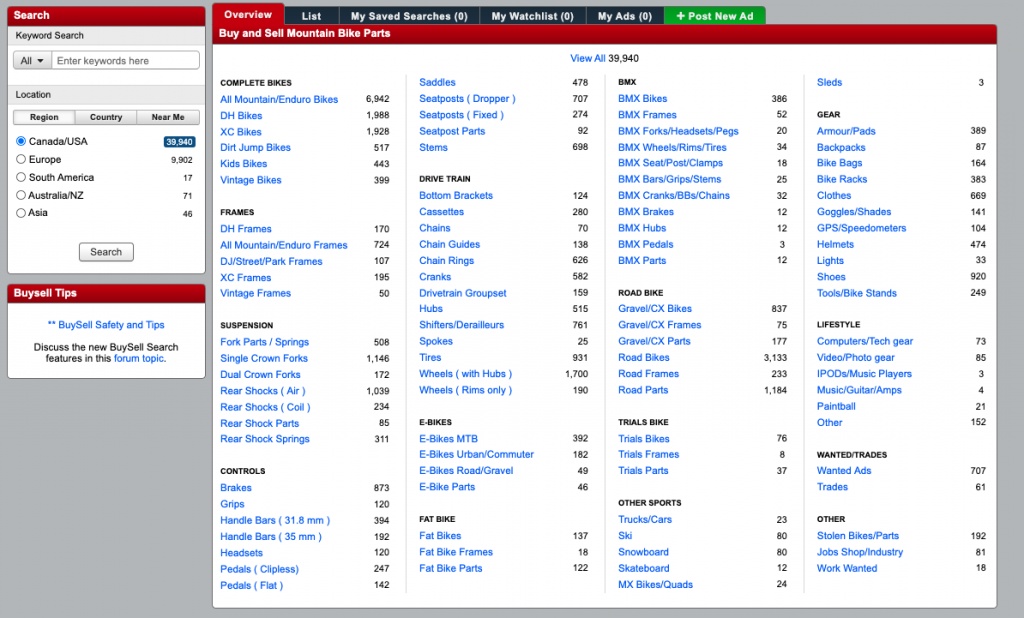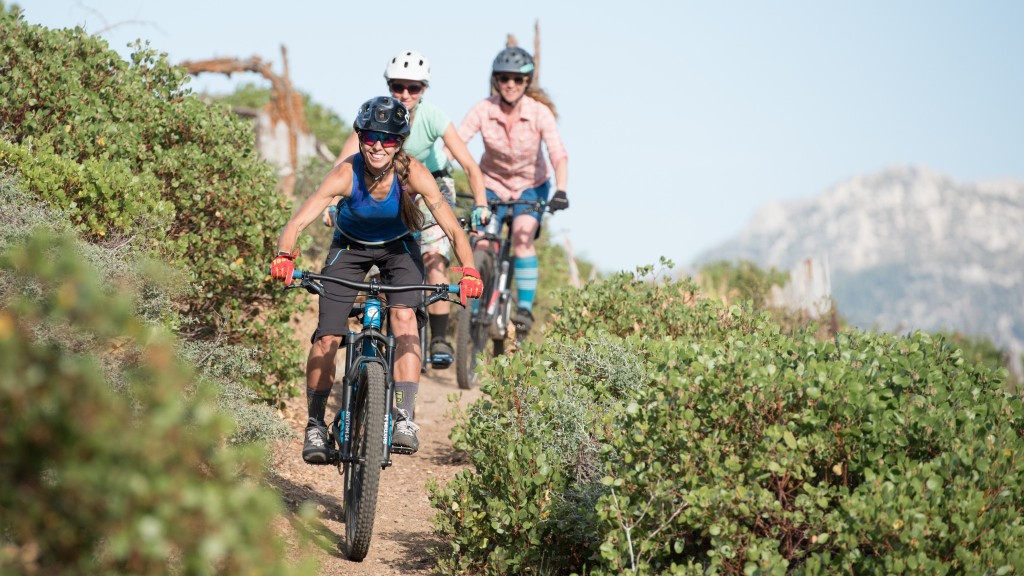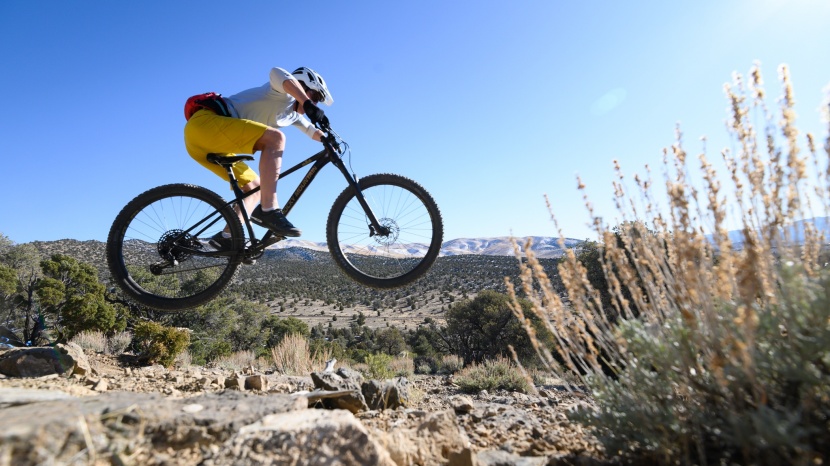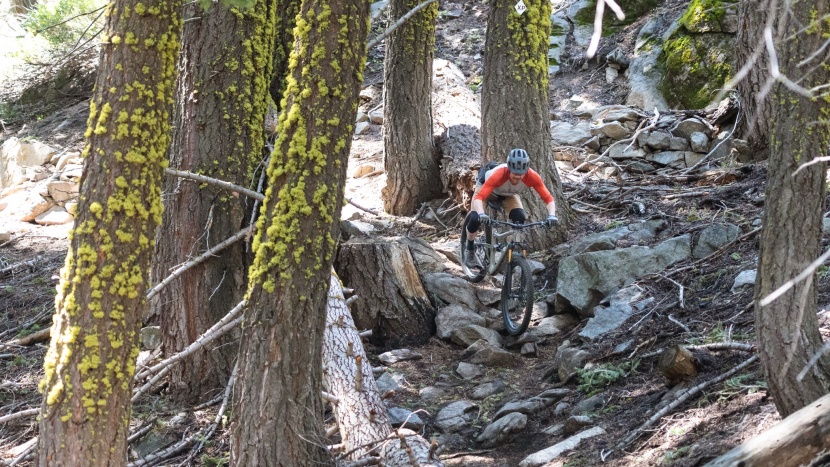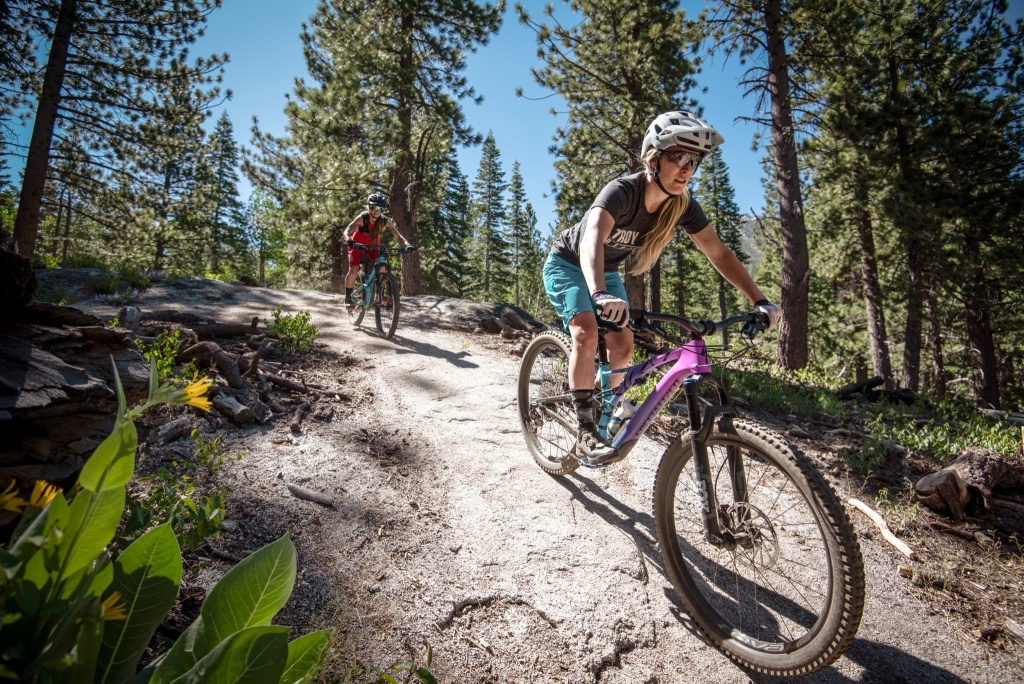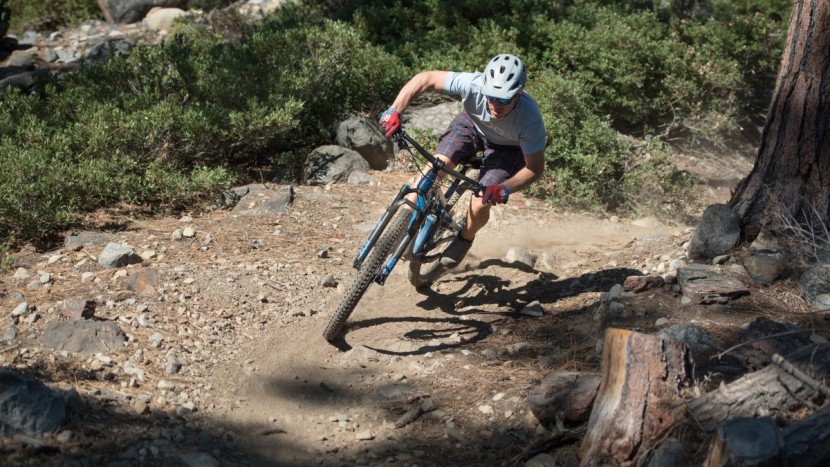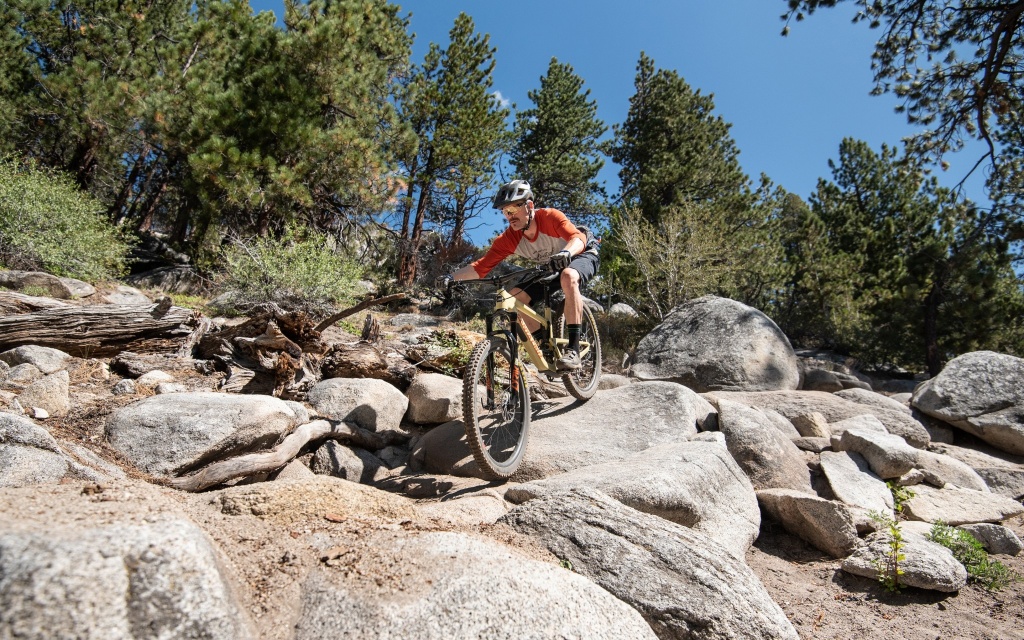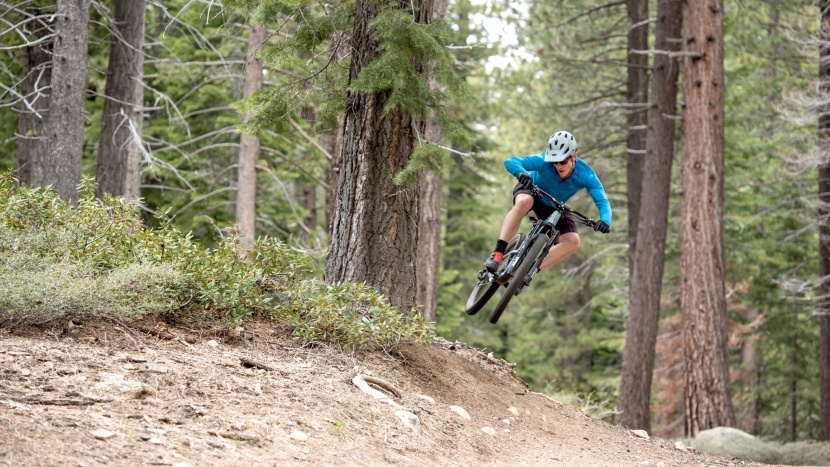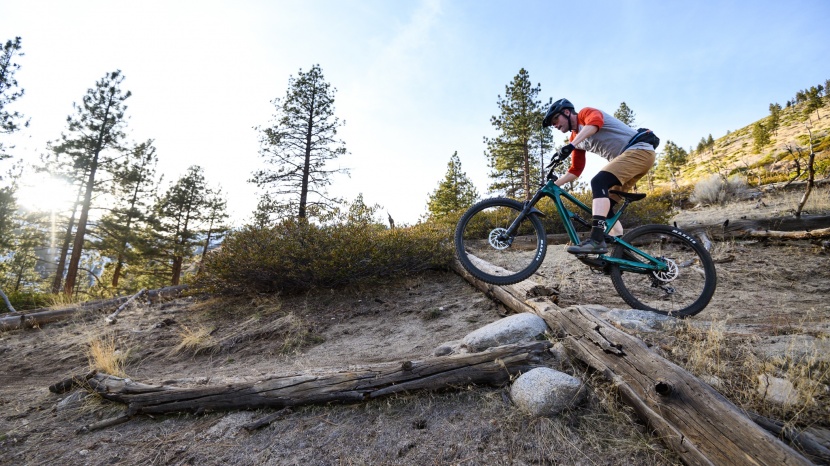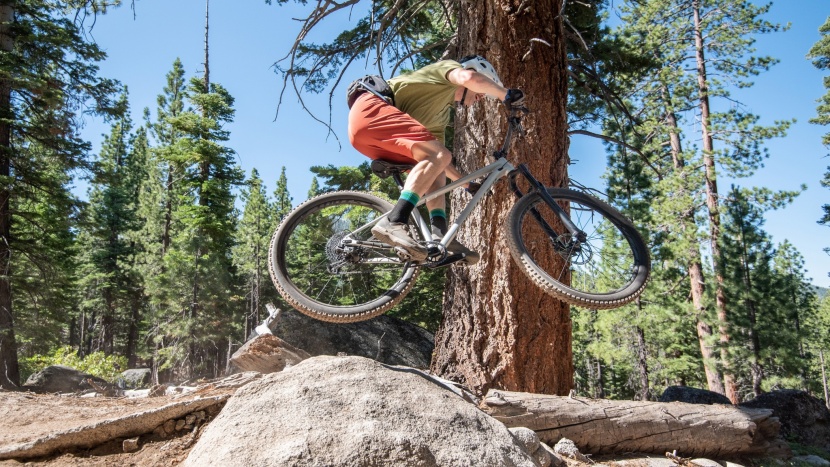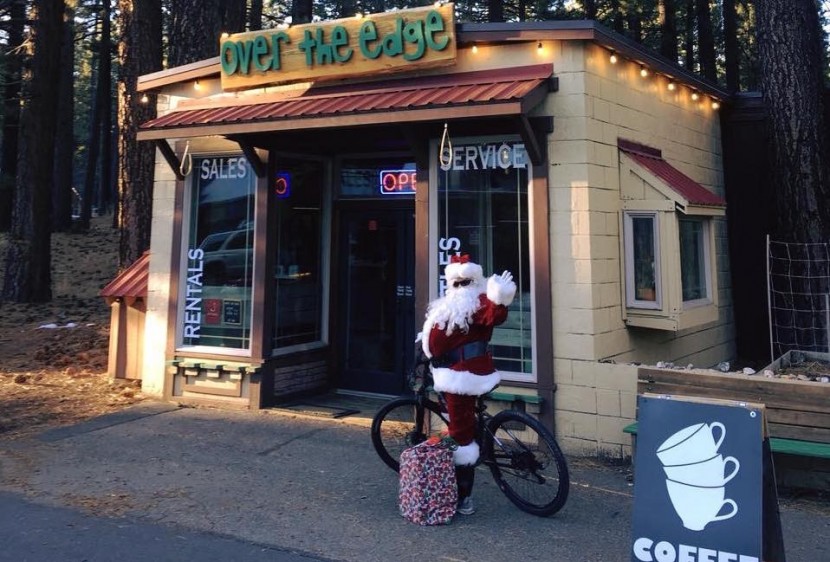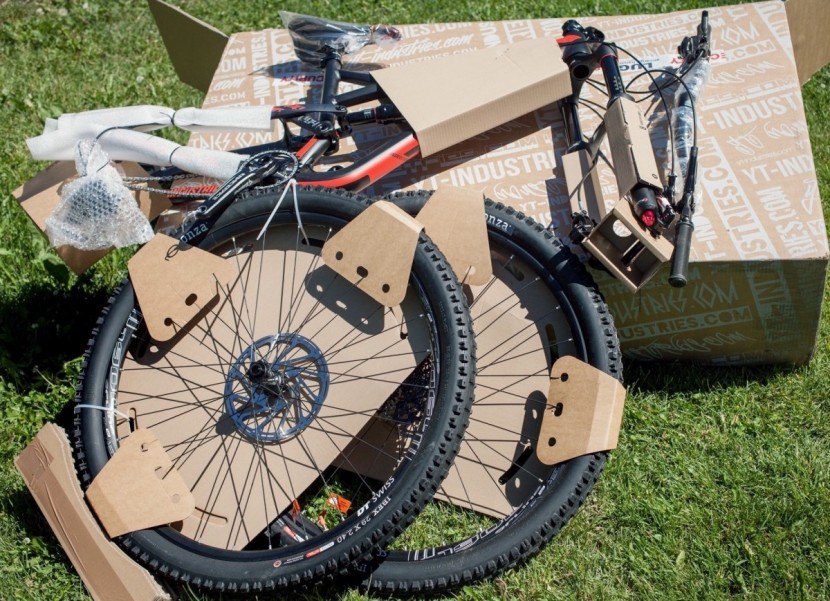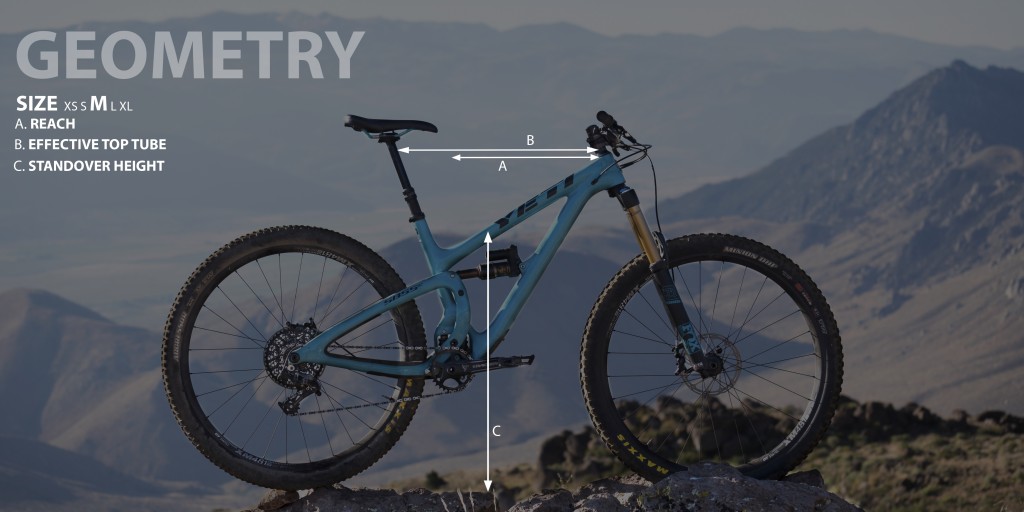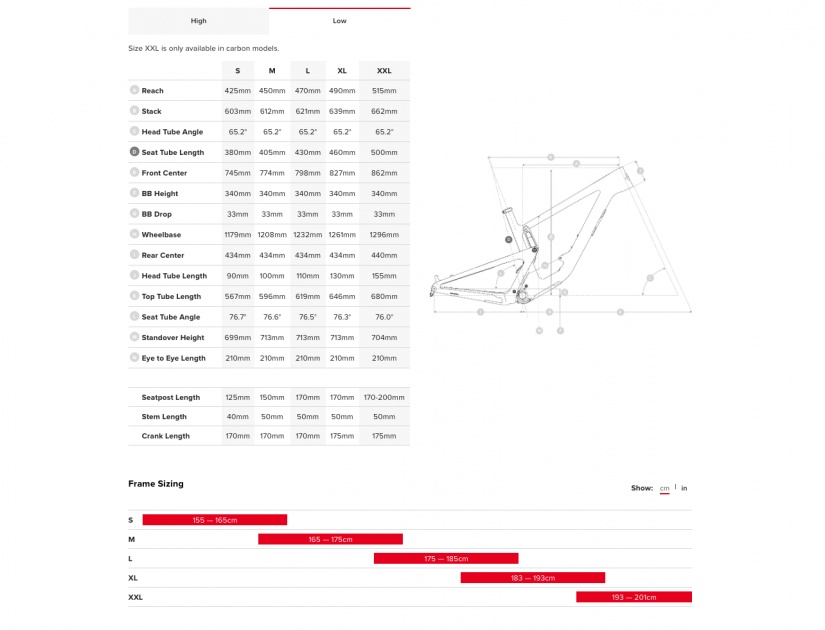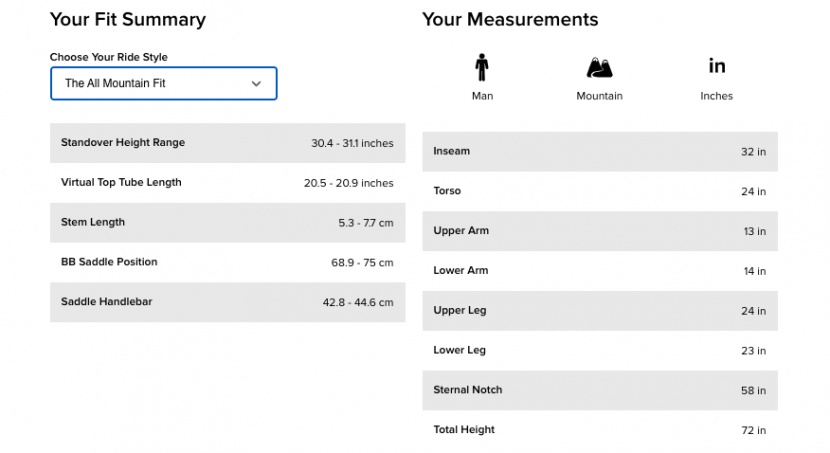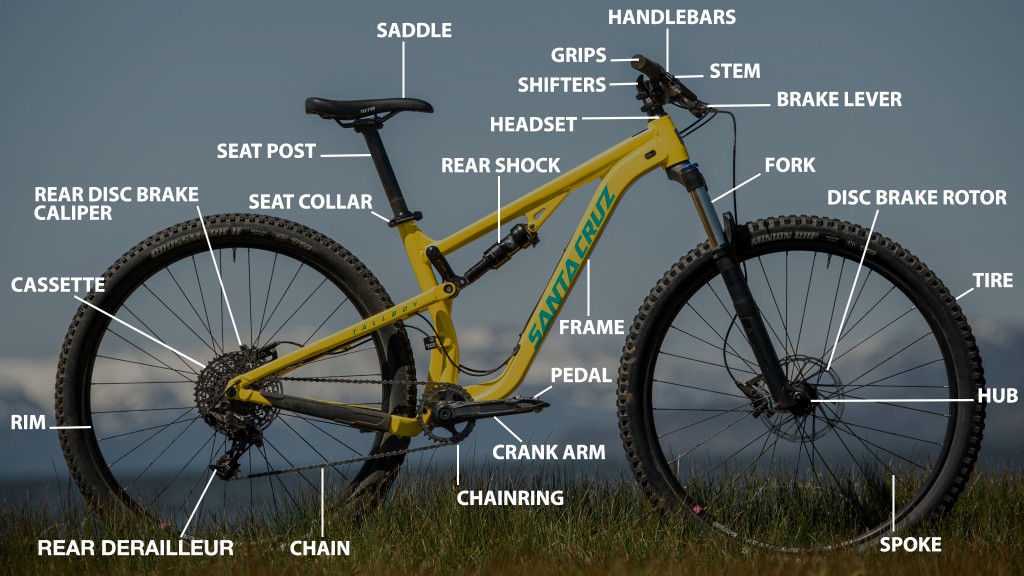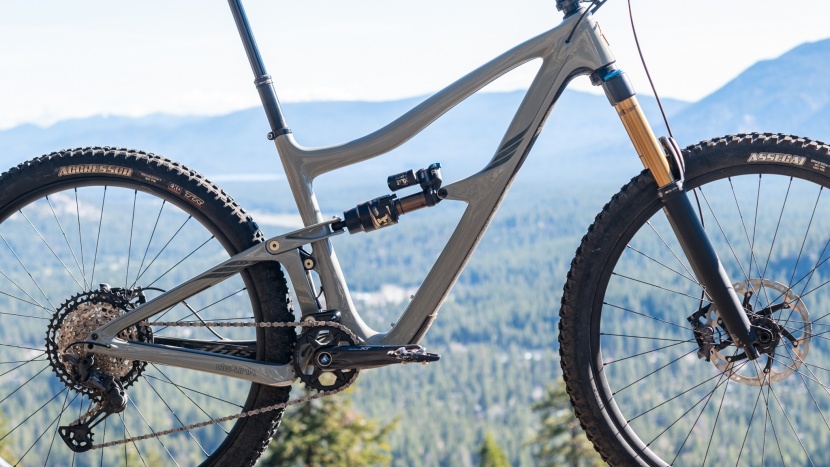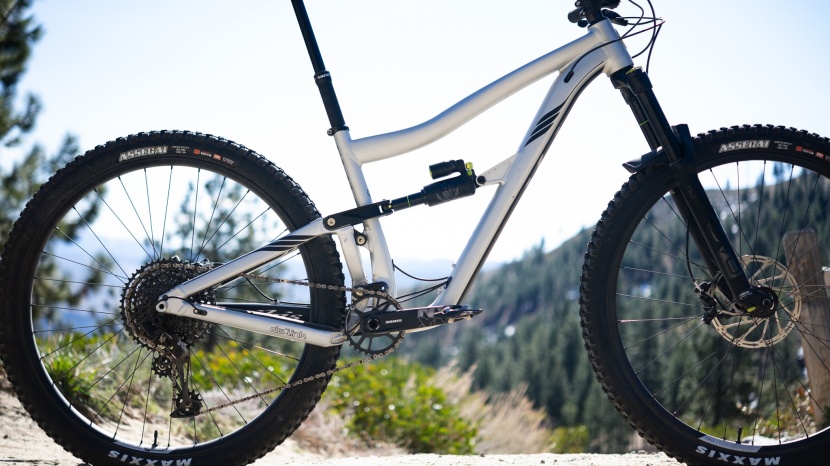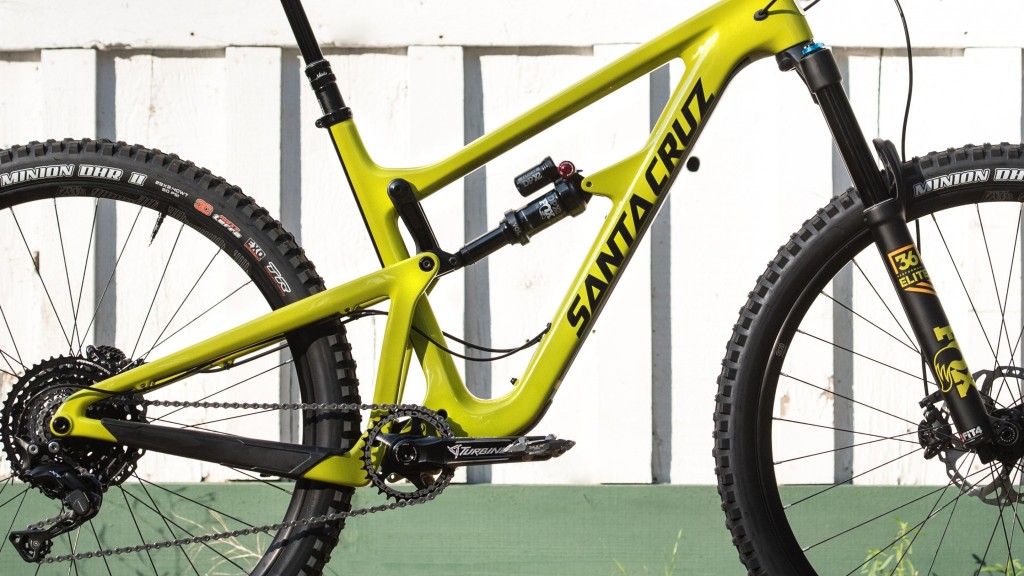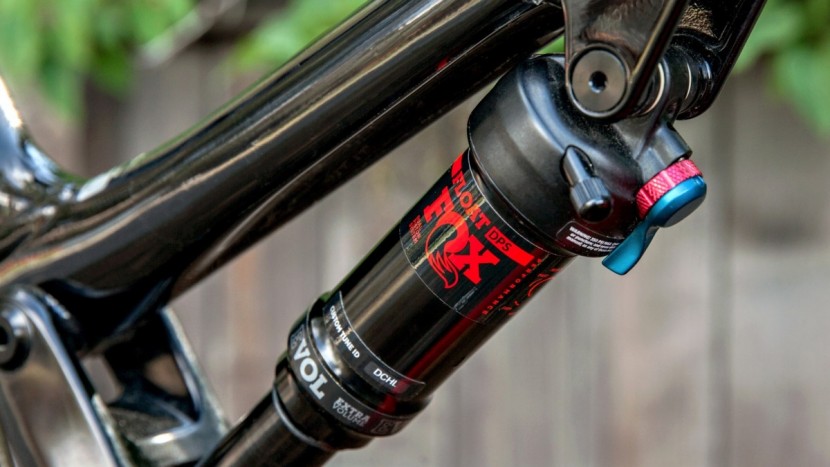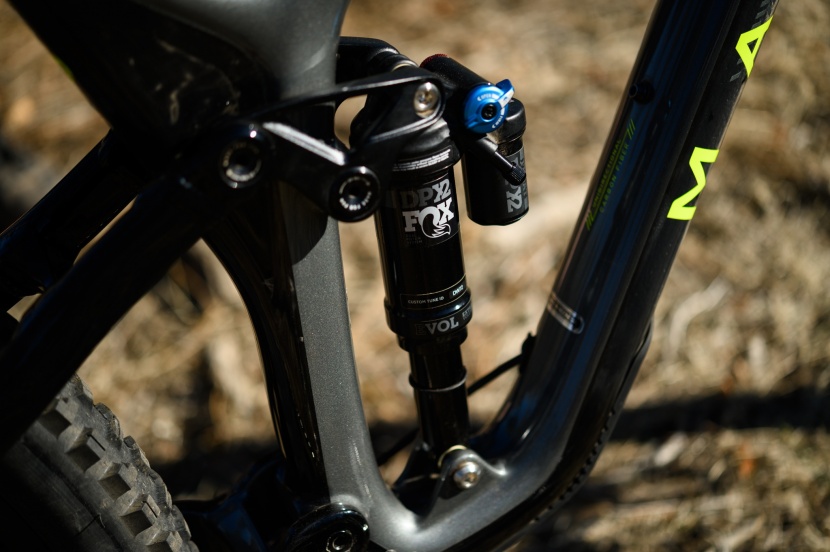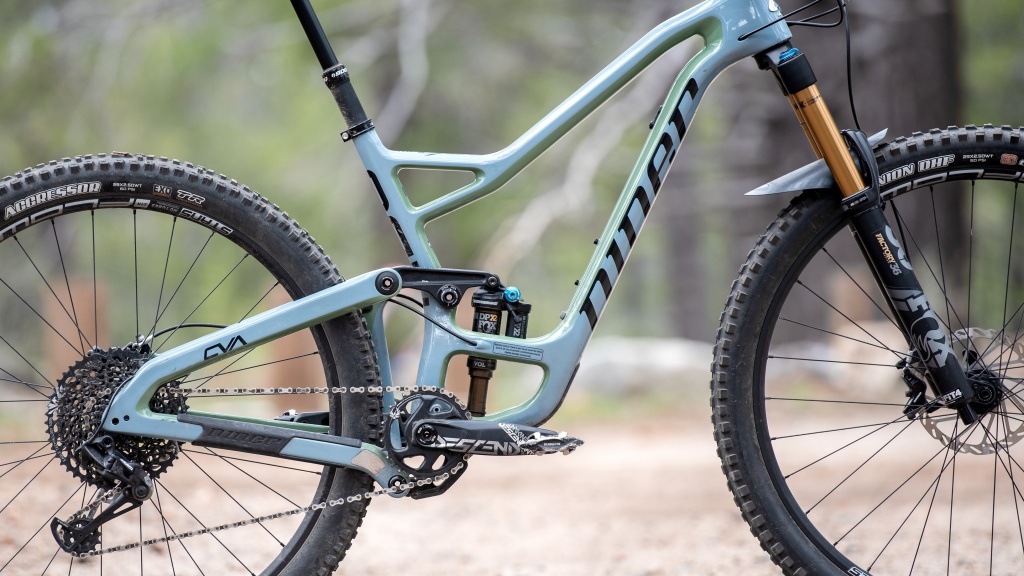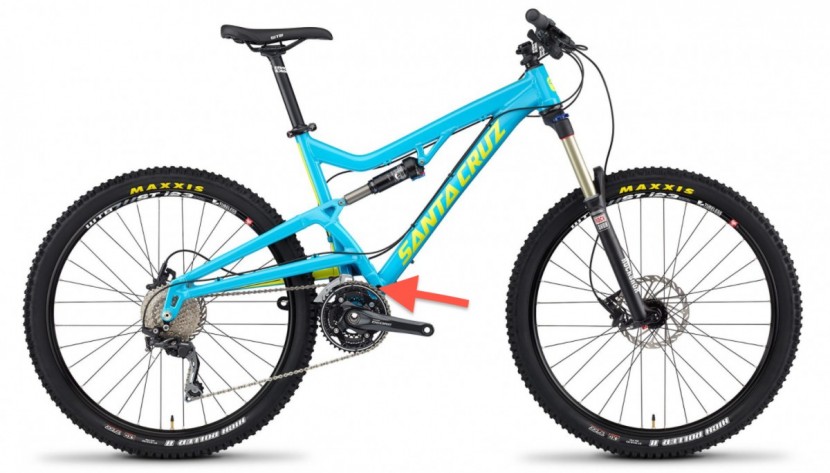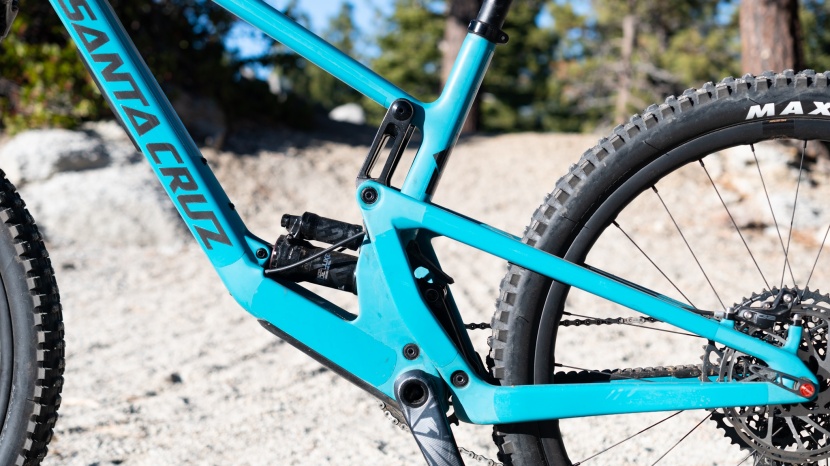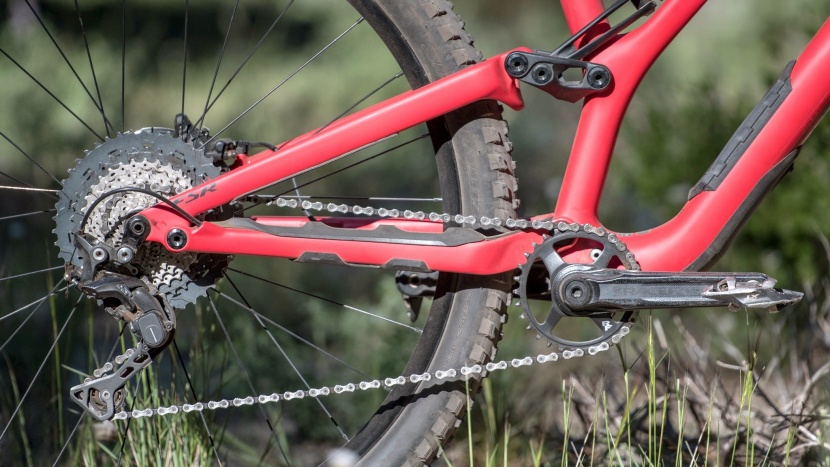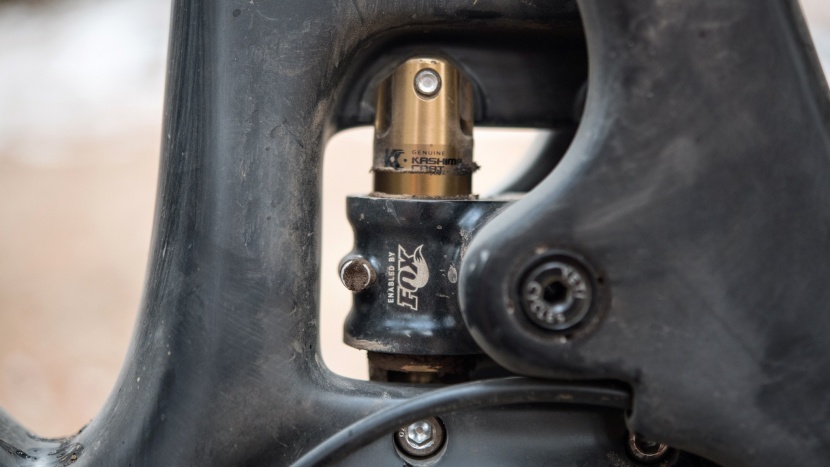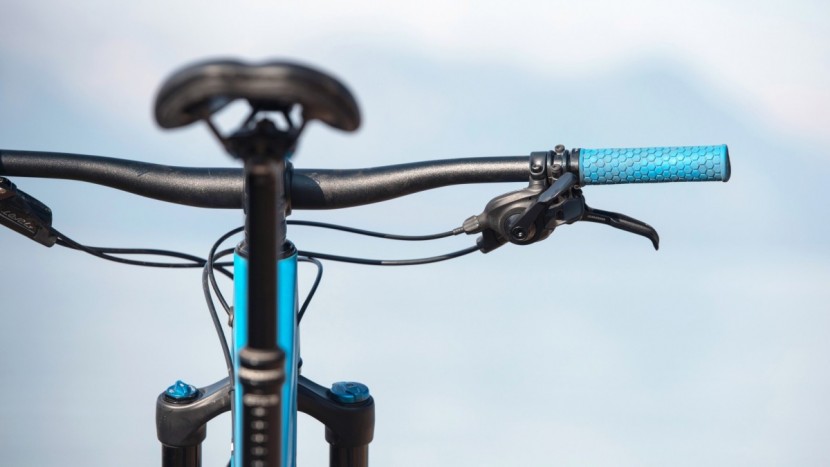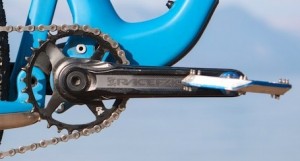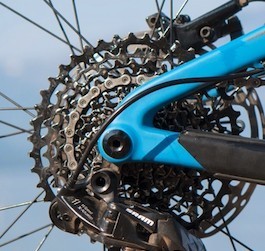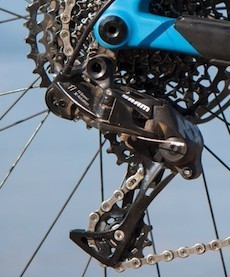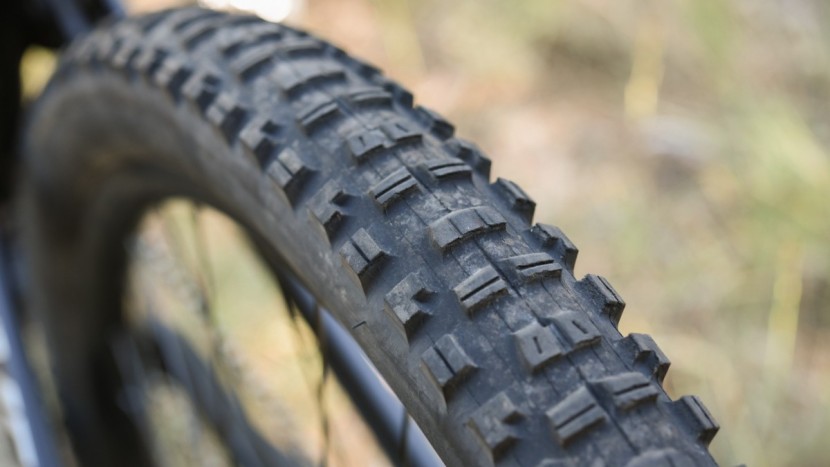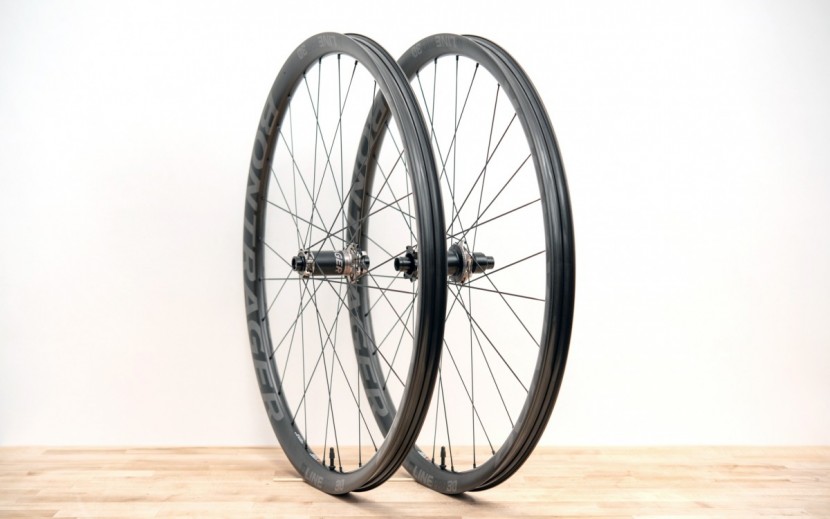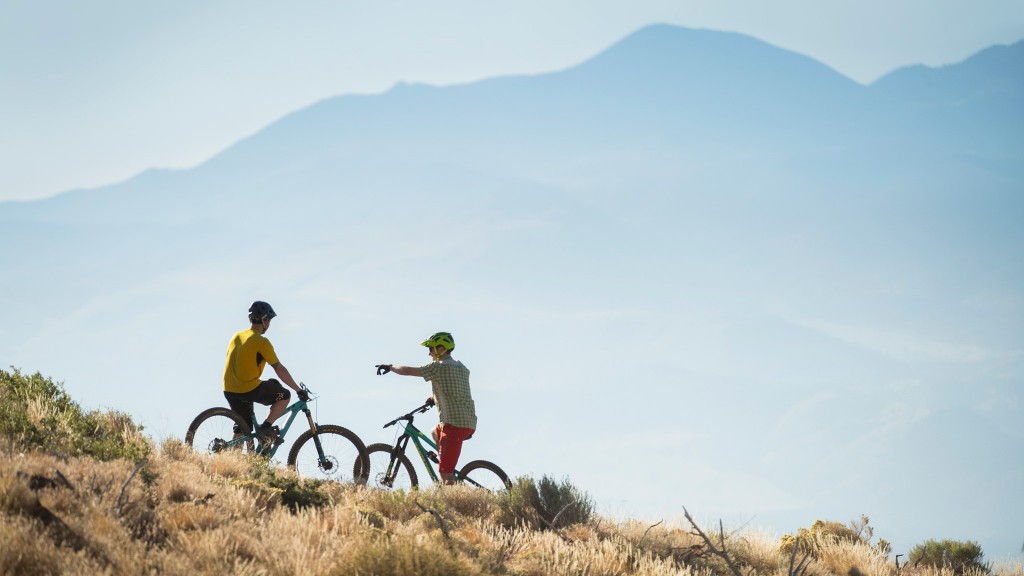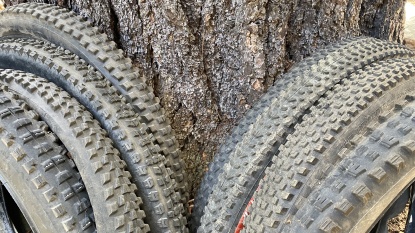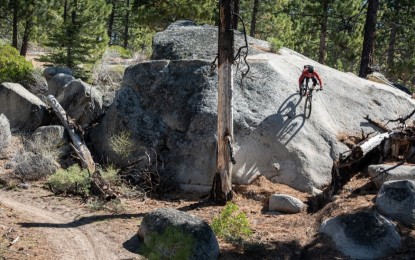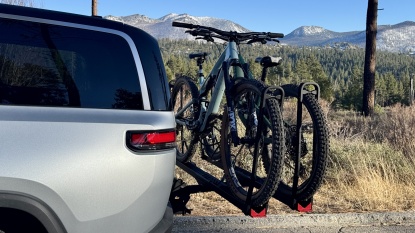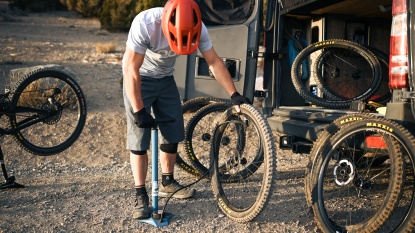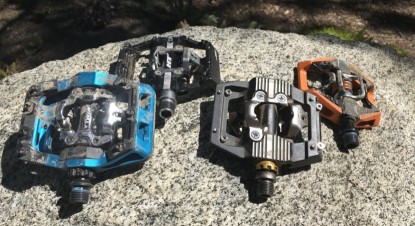How do you choose the right mountain bike? After running dozens of the most highly regarded mountain bikes in the world through the most rigorous MTB testing process in the industry, we've learned a few things. Here's what we tell our friends about buying bikes.
Bikes and their abilities exist along a spectrum. With so many excellent options out there, you're bound to find one tailored to your riding style. To prep, think about how much you want to spend, what type of riding you like to do, and how you like to do it. We've provided a lot of detail here. The table of contents navigation on the right can help you digest it.
How Much Do You Want to Spend?
High-end mountain bikes can cost upwards of $10,000. You can also get a mountain bike at Walmart for $100. This massive price difference indicates a performance gap similar to that separating a go-cart from a Tesla. Pro tip? Don't go for either. Here's some basic price range guidance:
$1,000
In this price range, we stick to hardtails or used full-suspension models. A new bike at this price point is harder to ride than a higher quality bike. It'll be heavier with lower quality components — making shifting more complicated and less consistent, pedaling feel comparatively lethargic, and the front suspension relatively harsh. Frame design ranges from reasonable to far behind the MTB innovation curve. All of this equals less fun. If you can move towards the next price bracket — above $1,500 — you can get a much better bike.
That said, if this is what you can afford, big brands typically have options in this price range. Direct-to-consumer brands also keep costs low. Commencal and Polygon both have hardtails available for under $1,000. If you can, buy the previous year's discounted model. You're not likely to miss any cutting-edge innovations.
By the time you ride one of these bikes enough to need new parts, you might want a new bike. The components that come with these bikes are often either impossible to service or not worth the effort. Your skills would also probably benefit from a higher quality frame at this point.
$2,000
Around $2,000 is where the decision between hardtail and full-suspension gets serious. If you're new to the sport, you'll benefit from the comfort and traction that full-suspension provides. And you can get a pretty good one at this price. On the other hand, a hardtail is simpler to maintain, encourages solid technique, and you can get a pretty nice one in this price range.
Most of the major MTB innovations trickle down to this price point. Think dropper posts, 1 x 12-speed drivetrains, and thru-axles. They won't be the highest quality versions though. That goes for your fork and rear shock too. But, if you invest in a solid frame, you can upgrade components over time to improve performance.
It's very unlikely that you'll be able to get one of the highest quality frames from a traditional manufacturer at this price point. For example, one of our favorite short-travel bikes, the Santa Cruz Tallboy starts around $2,800. However, You can get a complete bike with an aluminum frame from consumer-direct brands like Commencal and YT for more like $2,300. Despite their lower prices, the consumer direct brands are typically able to spec their bikes with similar, and in some cases better, components at a lower price.
$3,000
For $3,000, you can get a high-quality aluminum frame with mixed quality components. A bike in this category is often worth keeping, maintaining, and improving over the course of several years, even if you're riding multiple times a week. This is a great place for budget-minded buyers already hooked on mountain biking.
$4,000 to Infinity
Between four and five grand is a common price point for the truly dedicated, and where you start getting into carbon frames. In the $4,000 range, components are still a pretty even mix of solid and sub-par. By the time you get to $5,000 most of the bike's parts are well sorted, performing at a high enough level for the majority of mountain bikers.
Six grand and up is where you start getting higher quality carbon builds, which usually means it's moderately lighter. This price jump has yet to earn its keep in our tests. The components are also the highest tier in this price range. For many, that just means lighter. Unless it's backed up by a truly innovative frame or component spec, this price range can often seem more like flash than substance.
Buying Used Bikes
Buying a used bike is a great way to increase your bike's cost to performance ratio. If you want to buy a full-suspension bike for around a grand you could get lucky online. Better options will likely start at $1,500 to $2,000. A few things to consider when buying used bikes:
- Keep Some Cash — Your bike will probably need a little work. Keep 10 to 15% of your budget aside to cover it.
- Get Help — If this is your first bike, get an experienced friend to help you sort through all the details, or read a lot of reviews. If you can't find reviews and don't know any mountain bikers, you might want to go with a new bike at your local bike shop.
- Sizing — The wrong size bike can make you miserable. Check the manufacturer's website for guidance.
- Get Details — Ask for a high-quality, non-stock photos of the actual bike, a detailed component list, and whether there are mechanical problems to be addressed. Ask how regularly the fork and, if applicable, rear shock have been serviced. (The answer should be annually.) If it is a full-suspension bike, ask how often they cleaned the bushings and bearings (monthly) and when they were last replaced (annually). Some folks will keep maintenance receipts. Ask how many miles have they logged on the bike, ballpark. It's also a good idea to get the bike's serial number, often stamped on the underside of the bottom bracket shell, to make sure it's not stolen.
- Ask About and Avoid — Cracks or dents in a frame, particularly on a carbon bike, are a no-go. Also look for dented rims. You can replace them, but that should equal a price drop. Tell-tale signs of neglect like a rusty chain or cassette or bald tires are also red flags.
- Be Wary of Scammers — Trust your gut.
Resources
Bicycle Blue Book is a cool resource for both buying bikes and assessing value. Other used bike sites include eBay, Craigslist, Pinkbike.
The National Bike Registry fights bike theft in North America.
Bike Register does the same thing in the UK.
What Type of Bike Do You Want?
First off, what do you love about riding? Do you want an efficient bike made to go far, fast over smooth trails with a minimum of tech or chop? Consider a cross-country ride. Want to go downhill all day, every day, with no hope of pedaling back up? Get a gravity/downhill rig. If you're like most of us, you fall in between. You want a bike able to climb uphill and charge back down, head out on a sunrise-to-sunset mountain epic, and handle lapping glorious descents. This is the do-it-all gray space occupied by trail, all-mountain, and enduro mountain bikes.
Navigating this muddy middle ground comes down to figuring out what type of trails you like to ride and how you ride them. If you are mostly on mellow trails, a shorter travel or even hardtail mountain bike will keep the ride light and lively, while a longer travel bike may smooth out the ride to the point of boredom. If you're always seeking out the gnarliest lines around, you'll want a longer travel bike to take the beating. Some bikes are more playful and work well if you love launching every rock in sight. Others are more stable, helping timid riders gain confidence and confident riders gain speed.
Hardtail or Full-Suspension
Full-suspension bikes are more fun and forgiving than hardtails, from your first ride to your thousandth. The only real reasons to get a hardtail are price and ease of maintenance.
- Price — Hardtails are much simpler than full-suspension bikes. The linkage systems that allow a full-suspension bike's rear wheel to move require a lot of R&D. The rear shocks that control that movement do as well. All the extra bits and pieces are expensive, and you've got to get them serviced at least once a year.
- Ease of Maintenance — Mud, snow, and slop can confound the surprisingly delicate pivots and bearings of a rear suspension. They are also hard on your rear shock. None of this is a problem on a hardtail.
Women's Specific Bikes
Female? Wondering if there are special rules you need to follow to find your bike? Nope. A lot of companies market women's bikes alongside their mainstream, unisex, full-suspension bikes. You deserve a high-performing, comfortable, fun bike just as much as the unisex folks. That said, there are some legit women's specific options out there. Juliana and Liv are two brands that only make women's bikes. These bikes are typically only offered in smaller sizes with lighter shock tunes and women's specific touchpoints. To summarize, you just need a bike that fits you. If you opt for a full-suspension bike, you might also benefit from a lighter fork and shock tune than those meant for men, who are heavier on average. The industry is a little behind on that second bit, so your bike might be a little harder to set up for you.
If you're a lady charger, you know what's up. If you're starting out, push past the common, I don't need a nice bike because I'm not skilled enough to merit one, narrative. Better bikes make riding easier and more fun. Ask yourself how often you want to ride, how much you love it, and how much you can spend. Then, ask yourself what you want.
With all of that in mind, here's a rundown of the current bike categories, arranged from shortest to longest travel:
Cross-Country
These bikes focus on ruthless efficiency. They are a masochistic type of fun that sacrifices comfort and leisure for pure pedal power. Lower front ends, narrow tires and steep geometry are meant for cranking out miles, quickly. Cross-country bikes are either hardtails or have around 100mm of suspension.
If you don't have strong bike handling skills or love jarring your way over rocks, these bikes are only appropriate for smoother terrain. This is not the type of bike most mountain bikers want. Ideal trails range from service roads to mellow blue trails.
Trail
Trail bikes are the most balanced MTBs. They're good for climbing, descending and spinning along flat/flowy trails. Geometry splits the difference between steep XC bikes and very long, low and slack enduro rigs. With travel ranging from 120mm to 140mm, trail bikes offer a rougher downhill ride than enduro bikes but tend to be more playful (i.e., poppy and hoppy) at slower speeds. This broad category means that individual bikes climbing and descending skills vary widely, with many prioritizing one over the other and a few perfectly balancing the two. A jack of all trades is the master of none. You'll often see the category broken down further into short and mid-travel bikes. Get all the details on specific models in our review of the top trail mountain bikes. Get a summary of the categories below.
Short-Travel Trail — With travel ranging from 110mm to 130mm, these bikes prioritize climbing and a lively attitude. They aren't designed for bruising descents. Still, some are harder hitting descenders than their travel numbers imply. These are great options for beginners on mellow trails but also keep things interesting for more advanced riders. Excellent on green and blue trails and good for experienced riders on black diamonds. This is usually our choice for long mountain bike rides.
Mid-Travel Trail — This is a trail bike's trail bike, your classic 130mm to 150mm travel all-arounder. Still pretty lively on calm terrain and usually solid climbers. These bikes are designed with downhill performance in mind. Ideal trail range is blue to black, with occasional double black trails.
Hardtails — A new breed of hardtails with relaxed geometry and plus-sized tires smooth out their inherent harshness, making them more fun to ride. They're still more comfortable on green and very mellow blue trails though. Find out more in our hardtail trail bike review.
All-Mountain or Long-Travel Trail
The term all-mountain was tossed around willy-nilly for a while but is now centering around longer travel, not-quite-enduro bikes. These bikes range from 140 to 160mm of travel, but don't have the aggressive geometry to pin it down the gnar at mach speed. That's where the Enduro category comes in. What these bikes do is smooth out a bit more of the rough than your typical trail bike while still climbing pretty painlessly.
Get an all-mountain bike if you hold descending comfort in high esteem, aren't only in it for the Strava times, and don't mind working a bit harder on the climbs. These bikes are great for some blue and double black trails but shine on those single black diamonds. Our trail mountain bike review includes several all-mountain bikes.
Enduro
The enduro category was created to satisfy the demands of enduro-style racing, where uphill sections are mandatory but untimed. Downhill sections are timed for the win. As you'd expect, enduro bikes are more downhill oriented than trail bikes. They have more travel (roughly 150-170mm), and their frames are often longer and lower to the ground, increasing stability for descents. These bikes are at their best at high speeds.
Get an enduro mountain bike if you ride the whole mountain but your favorite part is charging down technical descents. They're also great for increasing confidence in your downhill skills. These bikes can handling pretty much any trail but are too squishy for a steady diet of mellow trails. They take an experienced hand to navigate the roughest terrain.
There are enduro hardtails. In our experience, having such aggressive geometry without the rear suspension to back it up is an interesting combination, though it appeals to certain riders and terrain.
Downhill
With around 200mm of travel and a dual crown fork, these bikes are meant for descending and descending alone. You'll need a shuttle or a lift to get these monsters to the top of the double-blacks they are meant to destroy.
Consider Maintenance
Mountain bikes are both incredibly rugged and surprisingly breakable. Only their tires are meant to take impacts. Fork and rear shock stanchions are frighteningly easy to scratch. This tears up the wiper seals and bushings and can destroy the internals. Derailleurs and derailleur hangers are prone to bending, chains stretch and break, and cassette and chainring teeth wear out. Tires puncture and rims dent. Be prepared to:
- Check your tire pressure and axle snugness before every ride
- Wipe down your fork and rear shock stanchion and clean and lube your chain after every ride
- Check your spoke tension and thoroughly clean off mud once a week
- Tighten bolts, check how tight your headset is, check your shock pressure and clean pivots twice a month
- Check your brake pads and chain wear monthly
- Take it to a shop full a full checkup once a year (get a list of what they're planning to do and make sure they are covering all the bases)
Where to Buy Your Bike
You can buy a bike at a bike shop or on the internet. A bike shop comes with the benefits of built-in warranty and mechanical support. On the downside, each bike shop has a limited number of manufacturers that they carry, like car dealerships. The internet lets you check out a wider range of brands, but some companies, like Specialized, are not currently available online. Purchasing online from web shops like Competitive Cyclist, Backcountry, or REI has the benefit of convenience, i.e., ordering from your couch, and they carry some of the most popular brands. Customer support is pretty good, and they can help you with your warranty, but you'll have to build a relationship with a local shop to address standard maintenance issues.
Bike shops often let prospective buyers ride a limited fleet of demo bikes. Another way to get on a bike you're interested in purchasing is to check out the manufacturer's demo tour to see if it has a stop near you. While it's certainly helpful to get on a bike you're planning to buy a half-day of ridding can be misleading. Often the testers' early favorites take a backseat to bikes whose solid performance shines out in the end.
Consumer Direct
Then there is the consumer direct option, where manufacturers skip the middleman to sell directly to riders. The company saves money, and so do you. Consumer direct brands like Commencal, YT and, to a lesser extent, Canyon offer insane values. Intense recently adopted a hybrid consumer-direct model with the same lowered prices available online or at stores. Here you get your lower-cost bike and your bike shop too. Trek and Giant also offer a mixed model.
Finding the Right Fit
If your bike doesn't fit, your confidence, handling skills, and happiness will suffer. A number of factors affect fit, but it all starts with the frame. Bike manufacturers size bikes as xx-small, extra small, small, medium, large, extra large and xx-large. Not all bikes are available in the full range of sizes, and sizing is not consistent across manufacturers. So it's important to look at actual measurements as well as each manufacturer's guidelines for fit and sizing.
The most important frame measurements to consider are:- Reach — The reach is the distance from the center of the head tube to the point in space above the center of the bottom bracket. This helps you determine how it will feel when standing and pedaling in the cockpit and whether your knees will knock the handlebars when climbing.
- Effective Top Tube Length — Sometimes referred to as virtual top tube length, this measures the horizontal distance from the center of the head tube to the center of the seat tube. This measurement correlates with how stretched out you'll be when seated.
- Standover Height — The standover height is how tall the bike is at the point you stand over it. You should have at least 2" between the top tube and yourself. Up to 5" is fine, particularly for aggressive riders.
- Seat tube and (Dropper) Seatpost Length — If the seat tube and seat post combo are too short, you won't be able to sit down while riding without hurting your knees. If they're too high in descending mode they won't let you get off the back of the bike to attack the trail.
You can find this information on bike manufacturer's websites, as shown in the Santa Cruz example below.
Before you worry about those numbers, you've got to measure yourself. The most important measurements are your inseam, arm length and the distance from your sternum to the floor. Additional measurements help dial in the fit and include trunk, forearm, thigh, lower leg and total height. Competitive Cyclist has a free online fit calculator with excellent measuring instructions. Outputs include ranges for bike standover height, a virtual or effective top tube length, stem length, a recommended BB to saddle length, and saddle to handlebar measurement as shown in the diagram below.
Again, the most useful of these measurements are the standover height range and the virtual, aka effective, top tube length. They don't provide an acceptable reach range but finding this measurement on your current bike, or a friend's is a good way to ballpark your acceptable range. The others are more helpful for setting up your bike than for buying it as they are highly adjustable.
More often than not, you can typically go with the recommended size for your height. In some cases, riders may size up or down based on personal preference for reach or some other measurement.
Components and Build
So you've found the perfect mountain bike for your riding style and dialed in your fit. Now you've got to figure out how to build it. This can go one of two ways. You buy one of the complete packages offered by the manufacturer or dealer, or you buy a frame and build it out yourself. In our tests, we buy complete bike build kits to honor their creators' visions and to review a product that you can actually buy. This is usually the more cost- and time-effective option as well unless you already have a significant stash of parts and lots of know-how.
We always shoot to optimize the value-to-performance ratio in each build kit we purchase and test. Some companies are better at building out bikes than others. Here's an introduction to the most important components and what to consider when you're considering them.
Weight
— One school of thought is that light makes right. As a result, many component upgrades are meant to shave ounces. While pedaling a lighter bike around is certainly pleasant, it's not the end-all factor in bike performance. As shown in the chart below, the top scoring bikes range from the lightest to the heaviest bike's we've tested. The heavier award winners are lower cost, aluminum bikes with less expensive build kits. They'd probably score even higher if we tested more expensive, lighter versions of the same bikes. But we still like the riding the hefty versions.Some bikes, like the Ibis Ripmo pictured above, come in carbon (left) and aluminum (right).
Aluminum vs Carbon
— This choice overemphasizes weight more than any other. Carbon is lighter than aluminum by about a pound per frame or a few pounds per bike. You'll be spending somewhere between $500 and $1,000 per pound of weight savings. Of course, wrapped into those costs, are the higher quality components that are almost always spec'd on carbon frames. This is a shame, as an aluminum frame with excellent components would often offer a better value.Strength and ride feel are more compelling arguments for carbon. Modern carbon frames are stronger than aluminum and usually offer a better ride-feel — transferring power more directly to the wheels and offering snappier turning and more direct steering. That's the real reason that we often prefer carbon. Still, we consider it to be more of a luxury than a performance necessity. We'd take a well-designed aluminum frame with top-notch geometry over a sub-par carbon bike every day of the week.
Boost spacing — Wheel axles for trail or enduro bikes were 142mm wide for ages. Now they're boosted, or widened to 148mm. Benefits include stiffer wheels and better handling.
The Suspension System
— Fork, Rear Shock, and Suspension DesignMost modern forks and shocks get a specific tune to complement the geometry and suspension linkage action of the frame. Shock tuning involves adjusting internal shim stacks to control oil flow rates. If it flows faster, the shock compresses or rebounds under less pressure. Slower float rates take higher impacts to activate. It happens in the factory and takes into account the weight of the average rider and leverage ratios. For riders who are lighter or heavier than the average rider, it's more difficult to find stock shocks tuned to suit their weight. Many companies adjust the tune slightly in accordance to frame size to lessen the impact.
Fork and Rear Shock — To make sure a fork and rear shock combination works properly, you have to set each up correctly for your weight, your riding style, and the type of trail you're riding. The fork and shock's factory tune and their adjustability affect how well you can dial them in, and thus how well your bike performs.
The first step to customizing your fork and shock is to adjust its air pressure to account for your weight. This is known as setting your sag. The air pressure can also be tweaked using tokens that reduce the internal volume of an air shock. More tokens mean less volume, softening the feel off the top and ramping up internal pressure quickly. This makes for a stiffer shock deeper in its stroke. Fewer tokens mean more air pressure, which compresses more evenly throughout and keeps the early part of the stroke firm.
No matter how great a bike's suspension system is, you won't get the full benefit unless you set it up correctly. This means setting your sag, or how much your weight settles the suspension. Sag preloads the shock so that it seeks the ground after a hit, maintaining traction. Unless you're an old hand at setting sag, take your bike to a shop and have them do static and dynamic sag tuning. Ask them to help you start dialing in your rebound rates while you're at it.
Next, you need to dial in the dampening and rebound rates on your fork and rear shock to account for different trail situations. More expensive forks and shocks are more adjustable to your trail and riding style. Here's a summary:
- Dampening — Forks and rear shocks have dampening mechanisms to control the speed of compression. Most high-end forks and shocks have low and high-speed compression damping and separate adjustments for each. Low-speed compression addresses slow impacts such as pedaling, braking, rolling impacts, or hitting small obstacles at slow speeds. High-speed compression controls how the shock handles quick impacts, such as braking bumps or motoring through a rock garden. Less expensive shocks have only one compression setting, low speed, offering the same performance over slow and fast impacts, which creates a rougher ride at both ends of the spectrum.
- Rebound — The rebound rate is how quickly the fork or rear shock returns to an uncompressed setting after an impact. If it's too fast, the shock will feel too stiff, like a pogo stick. Too slow and the bike will pack down, never fully extending between compressions. As a result, it will feel sluggish and unresponsive. High-end shocks come with low and high-speed rebound controls. Low speed controls how quickly the shock responds to a single compression. High speed controls how quickly it can recover from a deep compression or rapid-fire impacts.
Switching Out Forks and Rear Shocks — While you can switch out forks and shocks, they may not work with a frame's suspension design as intended. The length of a fork, measured from axle to crown, and the amount of travel it has plays a large role in determining a bike's head angle and bottom bracket height, and thus strongly impacts how a bike handles. For that reason, we recommend that beginners without years of experience buy a complete bike.
Suspension Design
— There are really only a handful of suspension designs, which control how the front and rear triangle rotate relative to one another on a full-suspension bike. The rear shock serves to absorb impacts and control the speed of these movements. Here are the five major suspension systems:Single Pivot — This is the most basic suspension design. Its earliest iterations appeared on motocross bikes. That means they aren't meant for pedaling, and the system suffers from serious pedal bob. Shock and design improvements have lessened the single pivot's pedal bob problem, but they are still some of the worst pedaling designs out there. They are also susceptible to brake jack. This occurs when braking forces essentially trick the suspension design, and the rear end feels like it locks up. Single pivot systems are less expensive than others and are pretty good at bump compliance.
DW-Link — A patented Dave Weagle design, the DW-link focuses on anti-squat, meaning that it reduces pedal bob to the greatest extent possible. It does so by keeping the suspension stiff early in its stroke where it would be most affected by pedaling strokes. Then it opens up deeper in the stroke, where it's activated by bigger impacts, i.e., rocks and roots. We find this lack of pedal bob to be very pleasant, but these bikes can buck a little on the bigger hits.
Virtual Pivot Point (VPP) — VPP aims to increase pedal power by reducing pedal bob. While it pedals well, it's generally thought of as a less efficient pedaling system than the DW-Link. On the flip side, the anti-squat intended to create a firm pedal platform can reduce traction and comfort when pedaling through chop. The rear wheel of some of our Santa Cruz test bikes gets hung up on some technical uphill maneuvers. Its plush downhill performance deeper in its stroke is top-notch, however. The system also aims to keep the wheelbase a consistent length while the rear wheel runs through its suspension. Intense uses a version of this system.
Horst-Link / Future Shock Rear (FSR) — The Horst-Link is the only suspension design with a pivot on the chainstay, so it's easily recognized. The most widely known use of this design is Specialized's patented variation known as FSR, or Future Shock Rear. These designs are meant to keep braking power from compressing the suspension. It does this job well but is choppy on small bumps. FSR systems also rely on rear shock compression settings to reduce pedal bob. Though we've found that these bikes are often efficient pedalers despite the bob, it is still an unpleasant sensation for many.
Switch Infinity — This is Yeti's suspension design. As the rear triangle moves through its travel, its patented Switch Infinity pivot hits an inflection point where it changes direction from up to down, shifting the wheel direction as well. This is meant to reduce pedal squat in the first part of the suspension while the wheel is moving rearward, and then to create a plush and supple ride deeper into the stroke.
Groupset
— A groupset includes a bike's drivetrain and brakes. The drivetrain consists of a crankset with chainring(s), a cassette comprised of multiple cogs on the freehub, a chain connecting the two, a rear derailleur, a front derailleur (if there's more than one chainring), and a shifter to operate it all. For groupset parts, more expensive usually means lighter, on occasion this can mean less durable. In other cases, it also means better construction, which can translate to durability and smooth operation. This is more likely the case with intricate parts like the rear derailleur and shifters. Chains, chainrings, and gears can actually last longer if they are heavier, sturdier and, most likely, cheaper.- Shifters — The most common shifters are SRAM and Shimano, which change gears with the push of a thumb or the pull of a finger. Both work well. There's one shifter for each derailleur, so 1x systems with only a rear derailleur open up space on the left side of the handlebars.
- Crankset — The crankset's spindle passes through the bottom bracket and has crank arms on either side. The drive side crank arm features a double or single chainring. The single ring setup is far and away the most popular and is called a 1x, pronounced one-by. As in, there is “1” chainring “by” a given number of gears on the rear wheel cassette, usually 1x11, or 1x12.
- Cassette — Traditional cassettes working with double or triple chainrings range from 11 teeth on the smallest cog to 32, 34 or 36 teeth on the largest. More recently, cassettes have been made to work specifically with 1x chainrings and range from the smallest gear with 10 teeth to the largest, with 50 teeth. To increase the gear range of these systems, SRAM created that Eagle 12-ring cassette, which makes climbing a bit easier.
- Derailleurs — Rear derailleurs move the chain from one gear to the next on the cassette and front derailleurs from one chainring to the next. The latter are unnecessary on 1x bikes.
- Chains — Chains wear out no matter what, but the more expensive versions may feel a bit smoother in the meantime. Heavier, less costly options may last longer.
- Disc Brakes — Disc brakes are ubiquitous on modern mountain bikes, composed of a hub-mounted metal plate, i.e., rotor, gripped by mechanically or hydraulically operated calipers. SRAM brakes are known for more gradual, modular engagement. High-end Shimano's are known for sharp engagement and power. Pay attention to the size of the rotor, as a larger one will give you more braking power.
Dropper post
— A seatpost that raises and lowers with the aid of your applied or lifted body weight and a handlebar-mounted remote. A dropper takes away the need to get off your bike to shift seat height. We're completely sold on their worth, even though they cost between $200 and $400. For help choosing a specific post, check out our dropper seatpost review.Tires
— Tires are a quick, and very affordable upgrade. The first choice is traditional tubed tires or tubeless, which inflate using an airtight seal. Tubeless tires have a much better feel and can be run at lower pressures without the risk of a pinch flat. They're a little more expensive and difficult, but we find that the feel is worth it. Here are a few more issues to consider:- Weight — You'll feel extra ounces on your wheels more than anywhere else on the bike due to the compounding forces of rotation. Heavier tires are usually more durable, but you know, heavier.
- Traction — More traction equals more control, and likely a little more weight. Fast rolling tires often have smaller nubs and less traction. But, as we've found in our tests, too little traction for the terrain will have you scrubbing tons of speed, negating any gains. You'll need to find the right balance for your terrain.
- Size — Tire sizes are getting interesting. Most mountain bike tires used to be 2.3" wide. Now plus-sized tires are moving into the scene, ranging from 2.8" to 3.0". Also, regular trail tires have ballooned to 2.5-2.6-inches. These provide more traction and a bit of extra suspension. Twenty-nine-inch hoops also cushion your ride. Wheel rims affect a tire's contact patch, with wider rims allowing a tire to spread and square-off, providing greater traction.
Wheels
— Like most things in mountain biking, everyone wants to keep the weight down. Lighter wheels make a bike easier to climb and handle. But they cost more. In general, you want three characteristics on your components — light, cheap and strong — but you can only pick two. Carbon wheelsets are an example, they are lighter and stiffer, meaning that they are better at cornering and transferring power and are faster accelerators. And they're much more expensive.- Size — Mountain bike wheels used to be 26" across the board. These are increasingly uncommon, with 27.5" and 29ers taking over the MTB world. The larger wheel sizes impact roots or rocks at a shallower angle, allowing the wheel to roll over obstacles more easily. The 29" wheels also have a larger contact patch, which gives you more grip when hammering on the pedals. We find that the 27.5" bikes are faster to accelerate, but the 29ers keep your rolling resistance down and gain and hold more speed. The 27.5" wheel size is a little more maneuverable than 29ers, but innovations in geometry are catching the big wheels up. We're excited to see where this rivalry will go.
- Type — A lot of riders underestimate the difference that good wheels make. Wheelsets are composed of hubs, spokes, and rims. Hubs engagement speed dictates how quickly the hubs pick up your power when you start to pedal. The number of teeth, known as points of engagement (POE), control this transfer. Hubs with higher POE make far better use of your energy but are more expensive, can be a bit loud, and often require more maintenance.
- Rim — Rims are following the tire trend these days — getting wider. They used to run about 19 mm. Now they range anywhere from 21 to 35 mm for a normal trail bike. Though they can be heavier, wider rims allow your tire to spread out, squaring off shoulders and taking maximum advantage of tire traction. This increases handling stability and lets you run lower tire pressures. And, if you're planning on running tubeless tires — with the superior ride quality they offer — you'll need to make sure your rims are compatible. Find out more in our mountain bike wheels review.
Conclusion
So there you have it. Pick your bike type and then figure out the right size and the appropriate build. Wait, how do you find the right bike model? Our bike reviews are a good place to start.

